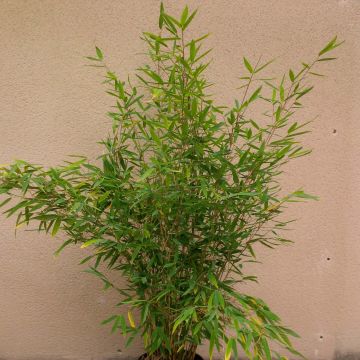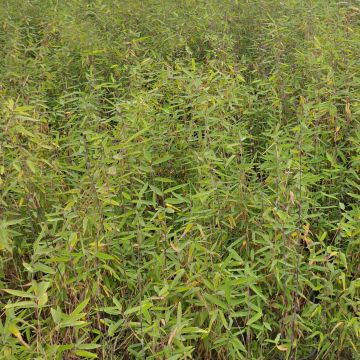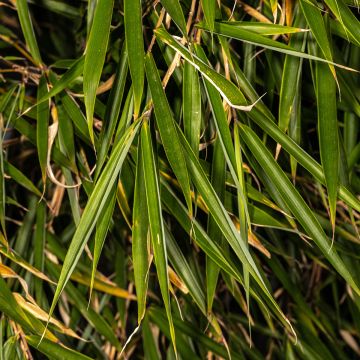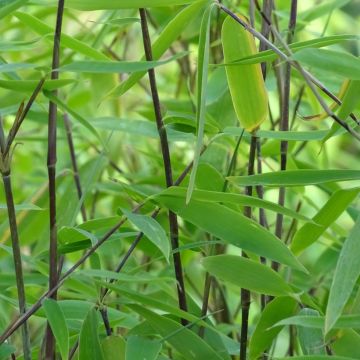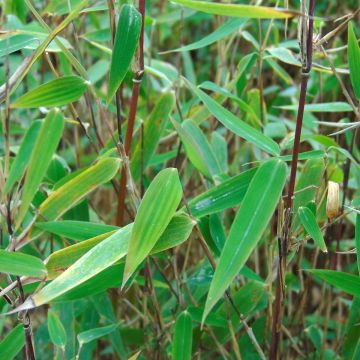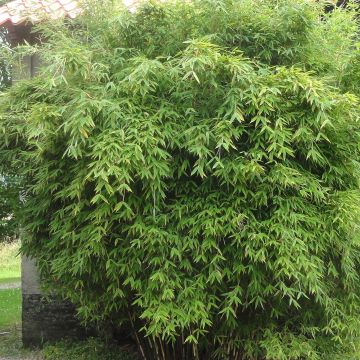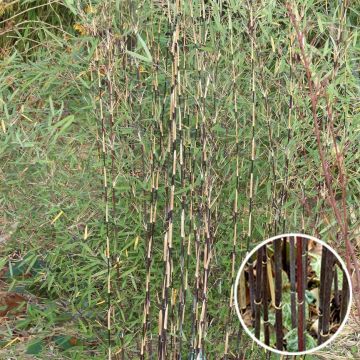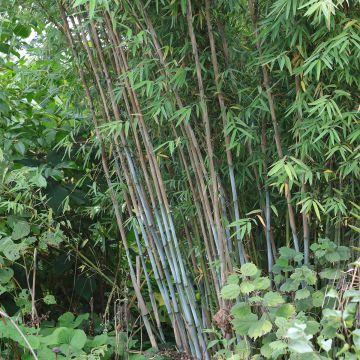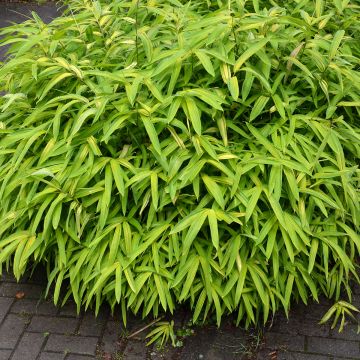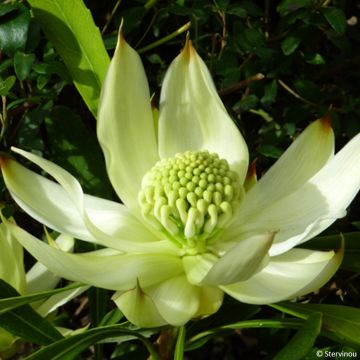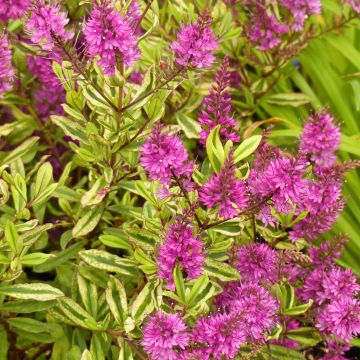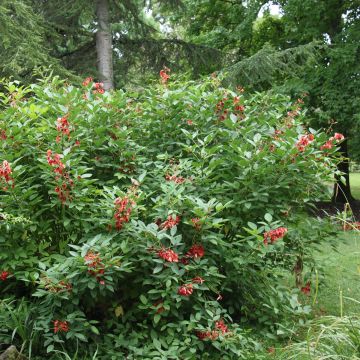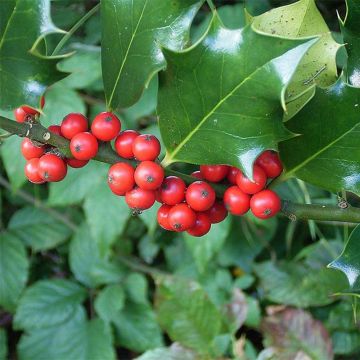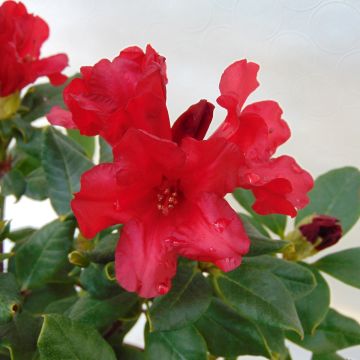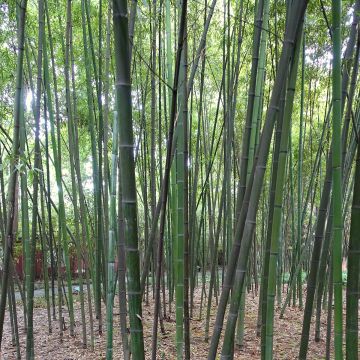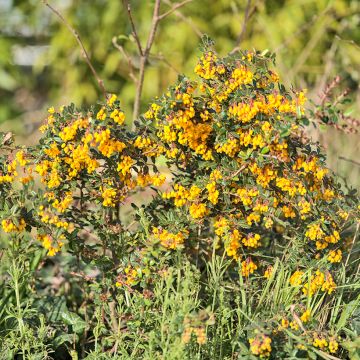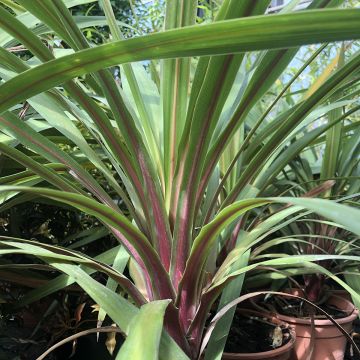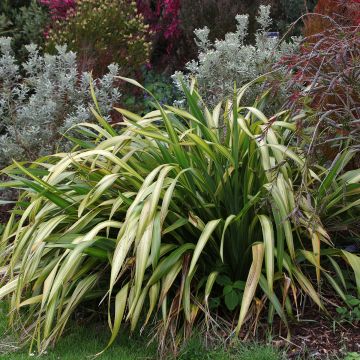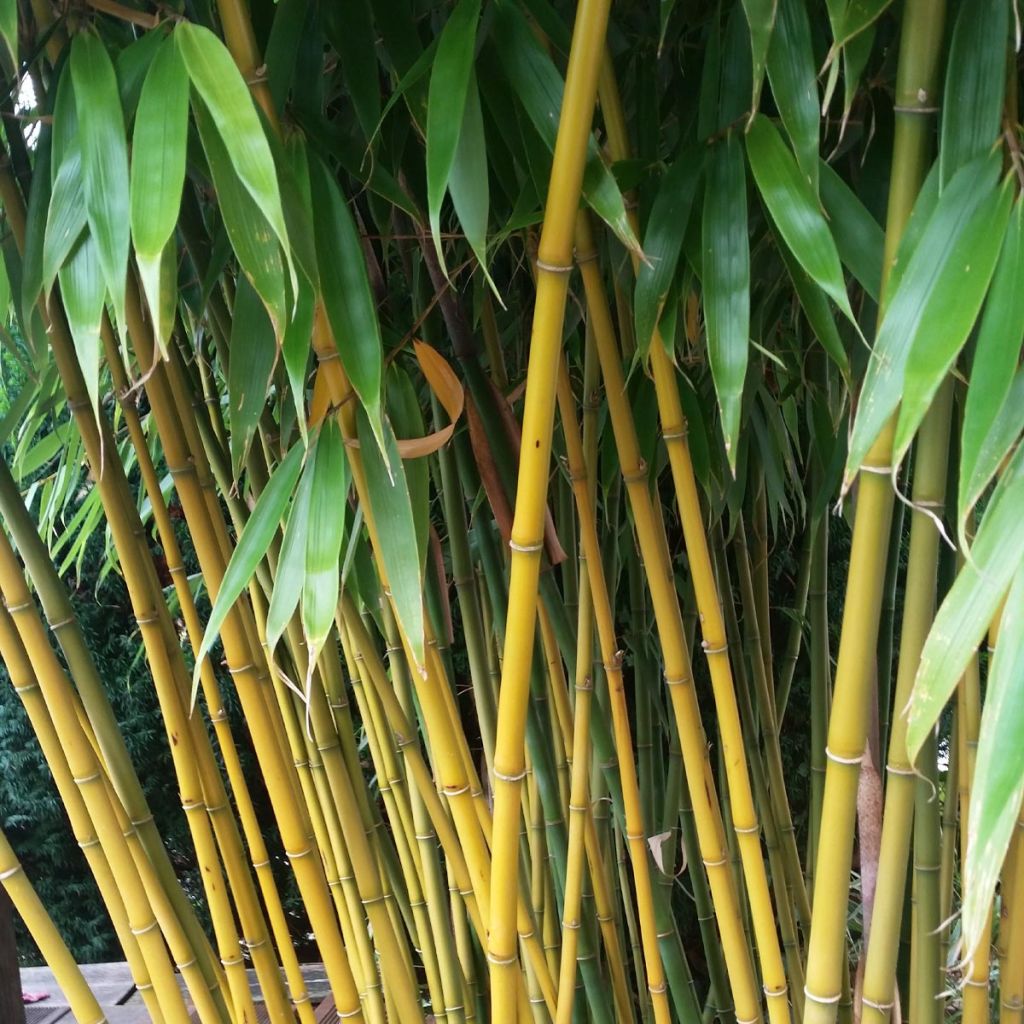

Fargesia robusta Wolong
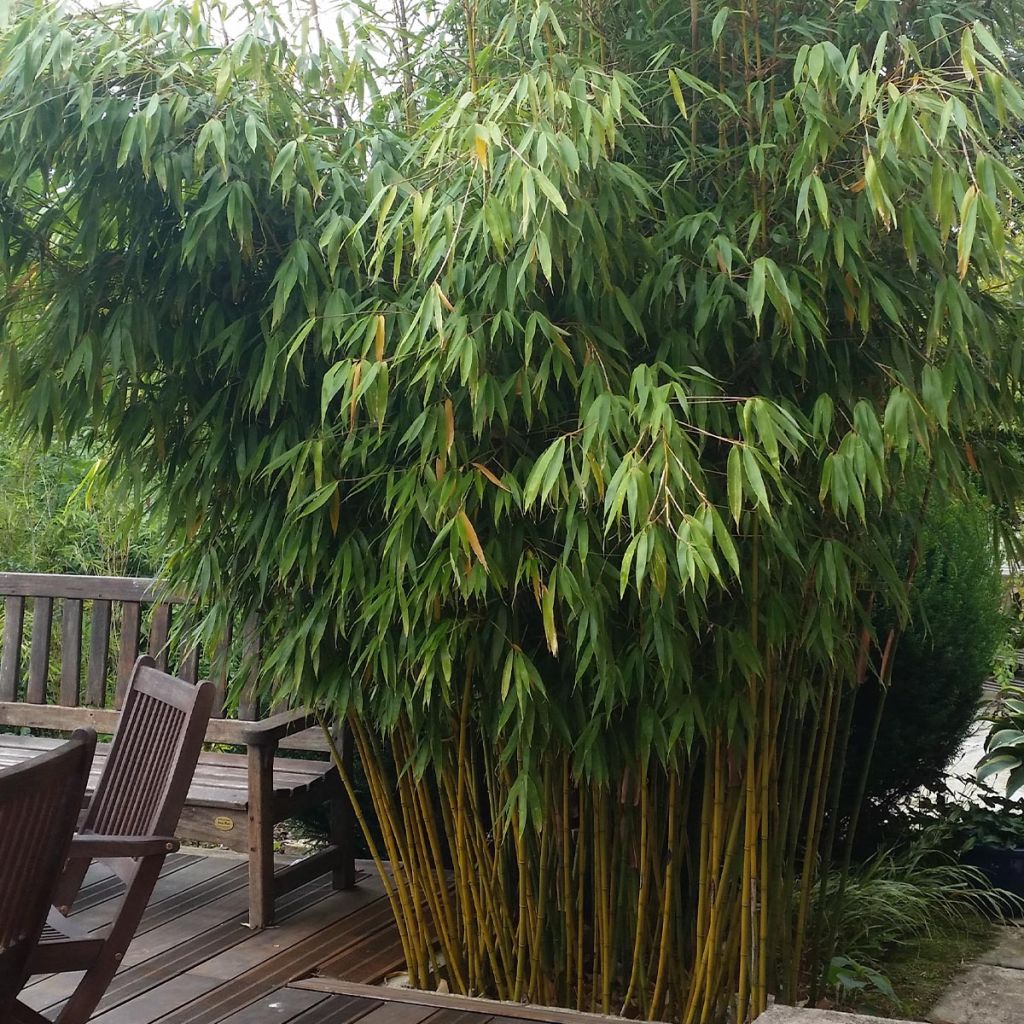

Fargesia robusta Wolong
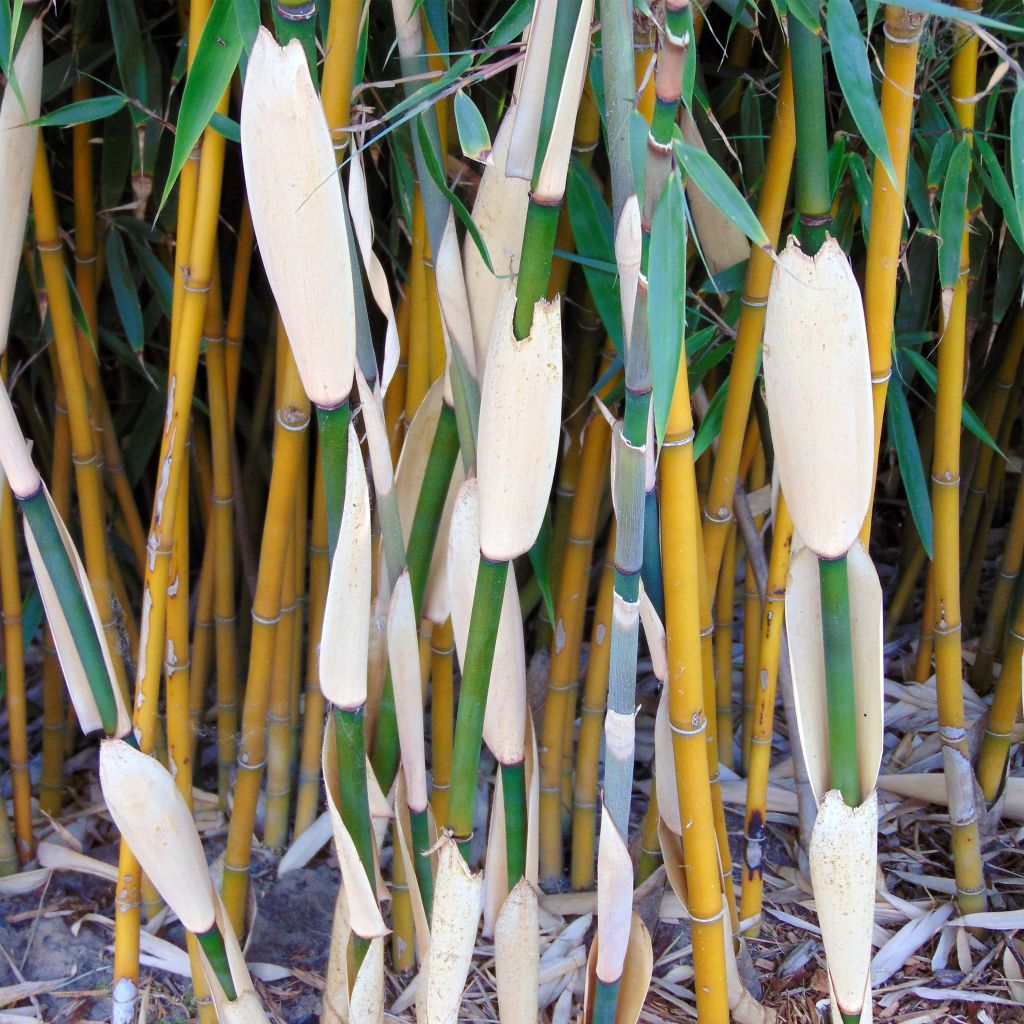

Fargesia robusta Wolong
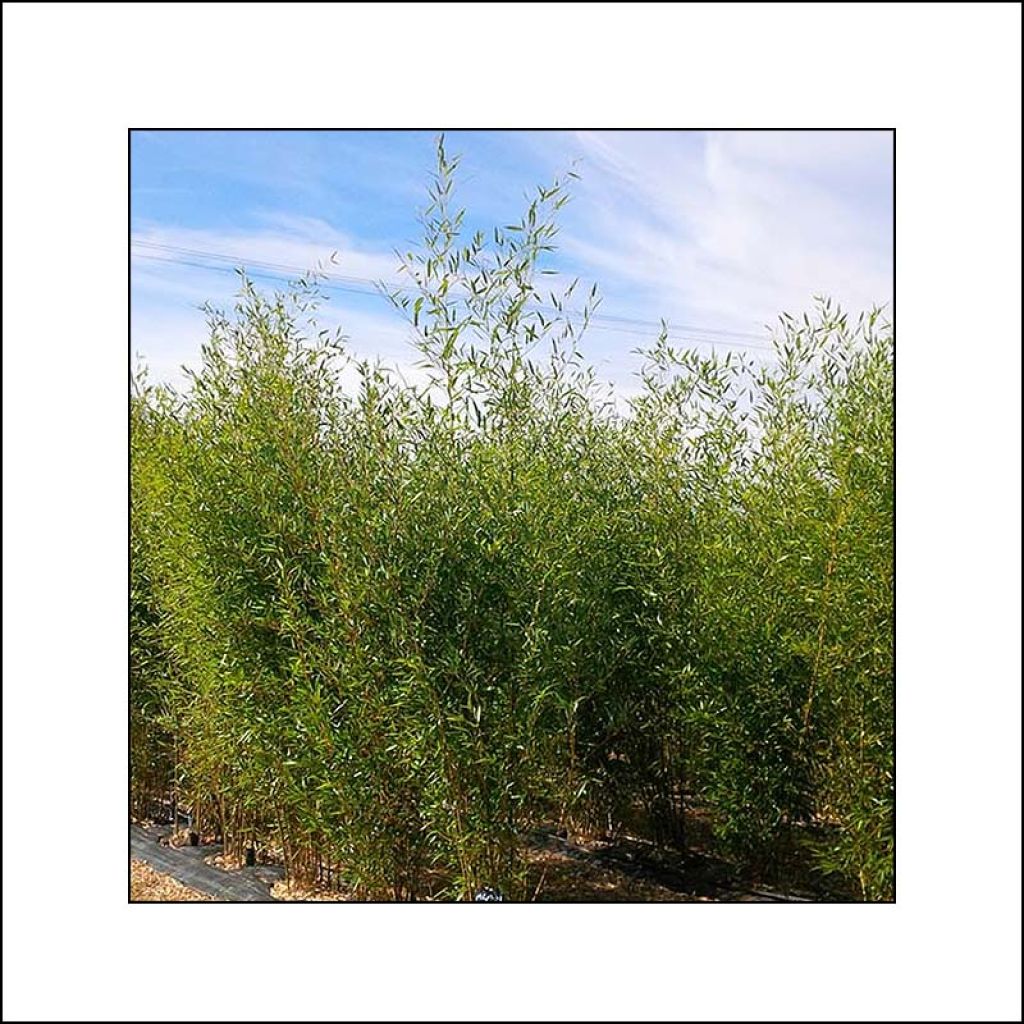

Fargesia robusta Wolong
Fargesia robusta Wolong
Fargesia robusta Wolong
Wolong Bamboo
This item cannot be shipped to the selected country
Delivery charge from €5.90
More information
Schedule delivery date,
and select date in basket
This plant carries a 24 months recovery warranty
More information
We guarantee the quality of our plants for a full growing cycle, and will replace at our expense any plant that fails to recover under normal climatic and planting conditions.
From €5.90 for pickup delivery and €6.90 for home delivery
Express home delivery from €8.90.
Does this plant fit my garden?
Set up your Plantfit profile →
Description
The Fargesia robusta Wolong is a small non-invasive bamboo that stands out for the size of its evergreen leaves, larger and wider than those of other varieties, somewhat reminiscent of those of the arrow bamboo. It is also noticeable for its beautiful stature and its spreading, flexible habit, which gives it a lush tropical plant appearance. Despite its exotic appearance, this Fargesia is very cold-resistant and is not difficult to grow in well-drained non-limestone soil. Stunning as a specimen plant, hedge, or in a container on the balcony or terrace!
Originally from China, Fargesia robusta belongs, like many grasses, to the Poaceae family. It is a very particular type of plant, which could be likened to a giant woody herb.
'Wolong', from which it originates, has a dense and trailing bushy habit. Its height growth is quite rapid. At maturity, this bush will reach 2 to 3 m (6 ft 7 in to 9 ft 10 in) in width. It develops from a non-invasive clump with thin, sturdy stems called culms. They measure about 1 cm (0.4 in) in diameter and can reach a height of 4 to 5 m. These slightly arched canes are dark green, covered with whitish sheaths, and then take on a lovely anise yellow hue, shining in the sun. They are adorned with long and fairly wide evergreen leaves, with a satin dark green colour. Perfectly hardy, it can withstand -18°C. However, in case of snowfall, remember to shake its culms to remove the snow). It is a variety that tolerates drought well.
Fargesia bamboos are not very demanding plants and are very ornamental in acidic or neutral, light, fresh, but well-drained soil. We recommend planting your Fargesia robusta Wolong in partial shade, as this is the situation that suits it best, although it also tolerates full sun very well. The Fargesia robusta Wolong does not require a rhizome barrier.
Bamboo is a plant commonly used in Asian-inspired gardens. It suits different styles, including natural and water gardens, and can create exotic small forests when planted in mass. Wolong bamboo, in particular, has a graphic design that brings verticality and lushness to decor. It grows fast and is quite dense, making it a good choice for hiding unsightly views. To do this, several plants should be installed one metre (three feet and four inches) apart.
Wolong bamboo can also be planted as a specimen, giving it enough space to express its full beauty. It works well in a mixed border, providing a slightly exotic style that can easily be combined with other evergreen shrubs like Nandina domestica, hollies, Mahonia, or Sarcococca. In a tropical-style border, it pairs well with many plants such as Cannas and Fatsia japonica.
If you have limited space, you can still enjoy the beauty of Wolong bamboo by growing it in containers. This way, it can be used on the balcony or terrace to create intimate spaces.
Report an error about the product description
Fargesia robusta Wolong in pictures
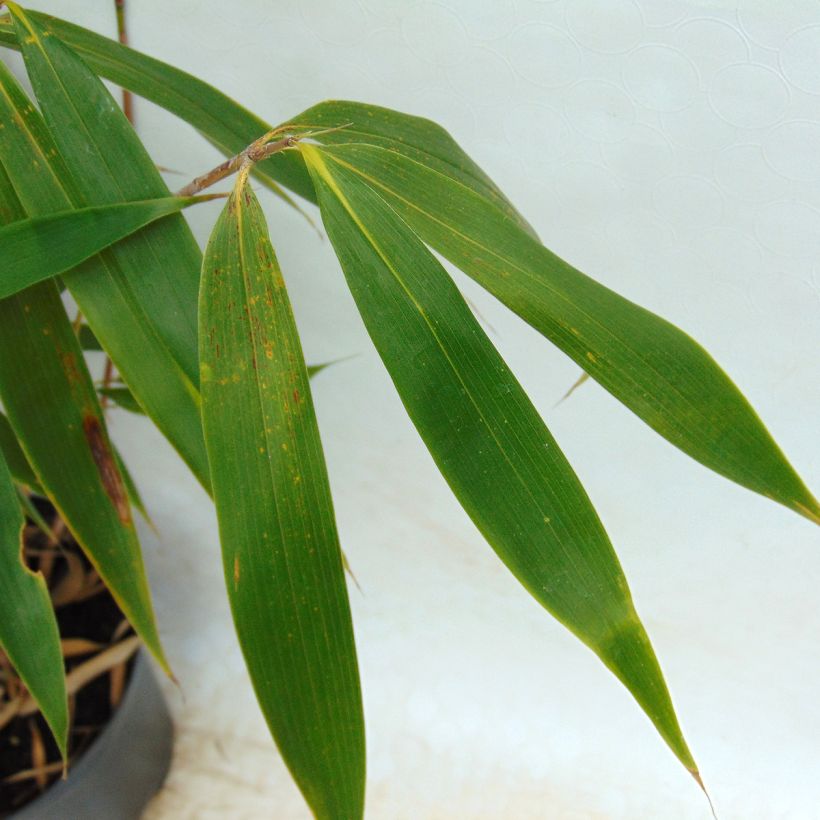

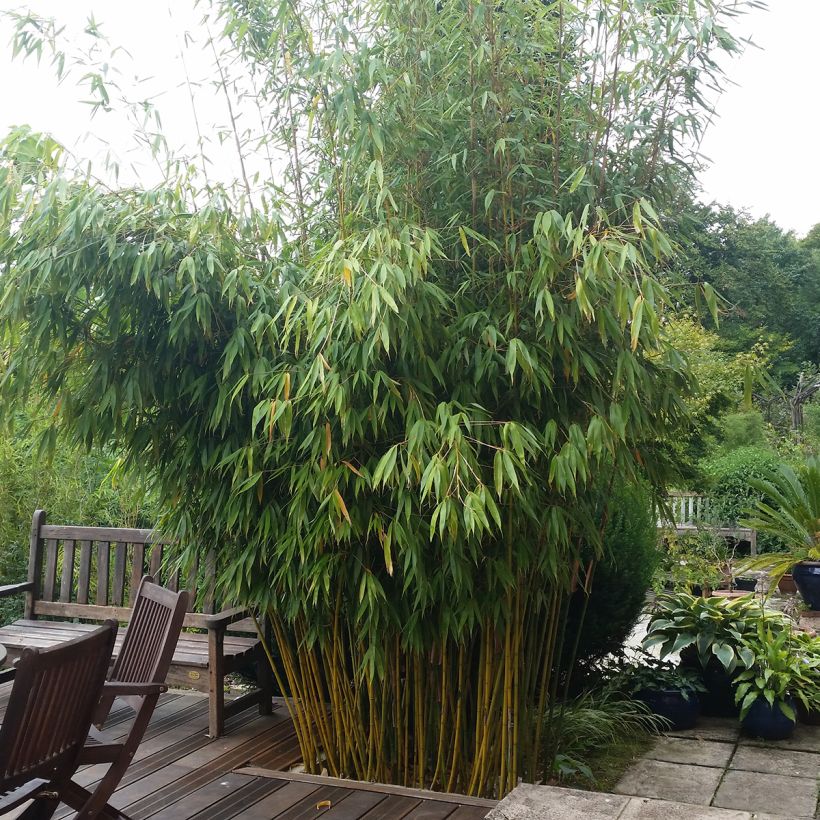

Plant habit
Foliage
Botanical data
Fargesia
robusta
Wolong
Poaceae
Wolong Bamboo
China
Other Non-spreading Bamboos
Planting and care
Bamboo can be grown in containers and planted at any time of the year except during freezing conditions. However, the best time to plant bamboo is in late summer and autumn when the soil is warm and rainfall is frequent. The distance between each plant depends on how you plan to use your bamboo. If you are going for a mass planting, allow a spacing of 0.8 to 1 metre (2 feet 7 inches to 3 feet 4 inches) between each plant. This distance can be reduced for a hedge to 0.6 to 0.8 metres (2 to 2 feet 7 inches).
In general, bamboo prefers rich, well-drained soil that remains moist, either acidic or neutral. It can also tolerate slightly chalky soil, depending on the variety. When planting, loosen the soil and moisten the root ball by soaking it. You can add well-rotted compost to the surface. Regular watering, especially during the first year if planted in the ground, and continuous watering, if grown in a pot, is essential. The establishment period can sometimes seem long, but it's normal, so don't panic!
This bamboo is not invasive, so installing a rhizome barrier is optional. Maintenance of bamboo is not too demanding; remember to weed around the base, especially in the beginning, until its dead leaves form a natural mulch on the ground. Applying nitrogen-based fertiliser (well-rotted manure or liquid fertiliser) in spring and autumn can be beneficial.
Planting period
Intended location
Care
-
, onOrder confirmed
Reply from on Promesse de fleurs
Evergreen shrubs
Haven't found what you were looking for?
Hardiness is the lowest winter temperature a plant can endure without suffering serious damage or even dying. However, hardiness is affected by location (a sheltered area, such as a patio), protection (winter cover) and soil type (hardiness is improved by well-drained soil).

Photo Sharing Terms & Conditions
In order to encourage gardeners to interact and share their experiences, Promesse de fleurs offers various media enabling content to be uploaded onto its Site - in particular via the ‘Photo sharing’ module.
The User agrees to refrain from:
- Posting any content that is illegal, prejudicial, insulting, racist, inciteful to hatred, revisionist, contrary to public decency, that infringes on privacy or on the privacy rights of third parties, in particular the publicity rights of persons and goods, intellectual property rights, or the right to privacy.
- Submitting content on behalf of a third party;
- Impersonate the identity of a third party and/or publish any personal information about a third party;
In general, the User undertakes to refrain from any unethical behaviour.
All Content (in particular text, comments, files, images, photos, videos, creative works, etc.), which may be subject to property or intellectual property rights, image or other private rights, shall remain the property of the User, subject to the limited rights granted by the terms of the licence granted by Promesse de fleurs as stated below. Users are at liberty to publish or not to publish such Content on the Site, notably via the ‘Photo Sharing’ facility, and accept that this Content shall be made public and freely accessible, notably on the Internet.
Users further acknowledge, undertake to have ,and guarantee that they hold all necessary rights and permissions to publish such material on the Site, in particular with regard to the legislation in force pertaining to any privacy, property, intellectual property, image, or contractual rights, or rights of any other nature. By publishing such Content on the Site, Users acknowledge accepting full liability as publishers of the Content within the meaning of the law, and grant Promesse de fleurs, free of charge, an inclusive, worldwide licence for the said Content for the entire duration of its publication, including all reproduction, representation, up/downloading, displaying, performing, transmission, and storage rights.
Users also grant permission for their name to be linked to the Content and accept that this link may not always be made available.
By engaging in posting material, Users consent to their Content becoming automatically accessible on the Internet, in particular on other sites and/or blogs and/or web pages of the Promesse de fleurs site, including in particular social pages and the Promesse de fleurs catalogue.
Users may secure the removal of entrusted content free of charge by issuing a simple request via our contact form.
The flowering period indicated on our website applies to countries and regions located in USDA zone 8 (France, the United Kingdom, Ireland, the Netherlands, etc.)
It will vary according to where you live:
- In zones 9 to 10 (Italy, Spain, Greece, etc.), flowering will occur about 2 to 4 weeks earlier.
- In zones 6 to 7 (Germany, Poland, Slovenia, and lower mountainous regions), flowering will be delayed by 2 to 3 weeks.
- In zone 5 (Central Europe, Scandinavia), blooming will be delayed by 3 to 5 weeks.
In temperate climates, pruning of spring-flowering shrubs (forsythia, spireas, etc.) should be done just after flowering.
Pruning of summer-flowering shrubs (Indian Lilac, Perovskia, etc.) can be done in winter or spring.
In cold regions as well as with frost-sensitive plants, avoid pruning too early when severe frosts may still occur.
The planting period indicated on our website applies to countries and regions located in USDA zone 8 (France, United Kingdom, Ireland, Netherlands).
It will vary according to where you live:
- In Mediterranean zones (Marseille, Madrid, Milan, etc.), autumn and winter are the best planting periods.
- In continental zones (Strasbourg, Munich, Vienna, etc.), delay planting by 2 to 3 weeks in spring and bring it forward by 2 to 4 weeks in autumn.
- In mountainous regions (the Alps, Pyrenees, Carpathians, etc.), it is best to plant in late spring (May-June) or late summer (August-September).
The harvesting period indicated on our website applies to countries and regions in USDA zone 8 (France, England, Ireland, the Netherlands).
In colder areas (Scandinavia, Poland, Austria...) fruit and vegetable harvests are likely to be delayed by 3-4 weeks.
In warmer areas (Italy, Spain, Greece, etc.), harvesting will probably take place earlier, depending on weather conditions.
The sowing periods indicated on our website apply to countries and regions within USDA Zone 8 (France, UK, Ireland, Netherlands).
In colder areas (Scandinavia, Poland, Austria...), delay any outdoor sowing by 3-4 weeks, or sow under glass.
In warmer climes (Italy, Spain, Greece, etc.), bring outdoor sowing forward by a few weeks.

































